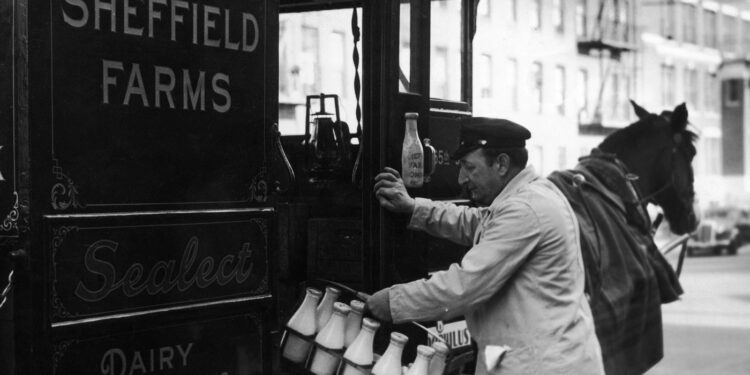In the bustling streets of New York City in 1878, the demand for fresh and safe milk was on the rise, and a unique system of milk delivery began to take shape. The rapidly growing urban population, coupled with concerns about the quality of milk, led to the development of an organized milk delivery system that aimed to ensure a reliable and hygienic supply.
During this period, the dairy industry faced numerous challenges, including unsanitary conditions, adulteration of milk, and the lack of refrigeration. To address these issues, entrepreneurs and dairy farmers took the initiative to establish a more structured system for delivering milk to New York City residents.
One notable development was the introduction of the “Milk Depot” model. Instead of relying on individual farmers or small vendors, milk depots acted as central distribution points where farmers would deliver their fresh milk. These depots served as intermediaries, helping to streamline the supply chain and maintain higher quality standards. This approach not only ensured a more consistent supply of milk but also facilitated better monitoring of hygiene practices.
To further enhance the quality of milk, some forward-thinking individuals implemented measures to combat adulteration. The practice of adding water, preservatives, or other substances to increase volume and shelf life was widespread at the time. However, with the establishment of reputable milk depots, consumers could have confidence in the purity of the product they were purchasing.
In addition to these improvements, the delivery process itself underwent significant changes. The iconic milkman, driving a horse-drawn wagon filled with milk cans, became a familiar sight on the streets of New York. This system allowed for the timely and efficient distribution of fresh milk directly to the doorsteps of households.
As the milk delivery system evolved, so did the public’s perception of milk consumption. The convenience and reliability of home delivery contributed to an increased reliance on milk as a staple in the American diet. Families could now enjoy the nutritional benefits of fresh milk without the concerns of contamination or adulteration that had plagued earlier practices.
In conclusion, the year 1878 marked a turning point in the history of milk delivery in New York City. The establishment of milk depots, improvements in hygiene practices, and the introduction of home delivery systems collectively transformed the way New Yorkers accessed and consumed milk. This pivotal period laid the foundation for the organized and efficient milk delivery systems that continue to serve urban populations to this day.
newshub



Recent Comments